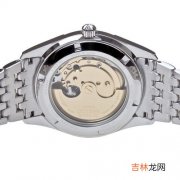What’s the passage mainly about?
What’s the topic of the passage?
What are the two speakers talking about?
What is the dialogue/conversation about?
2.捕捉主要细节,确认具体事实
这类试题在高考听力试题中约占8小题 。它要求我们听清、听懂与话题中心相关的具体信息,准确理解具体细节,如时间、地点、人物、价钱、数量、目的、原因、结果等 。同时,还要求我们对所听到的信息进行简单的处理,比如数字运算、时间顺序、比较筛选、同义转换、因果关系等 。理解具体信息有助于把握话题内容,领会说话者意图,这是听力考查的重点内容 。常见的提问方式有:
Where is the woman going?
How does the man pay for the tickets?
What’s wrong with the girl?
When does the woman plan to arrive?
What’s the man’s house number?
How many hours does Tom sleep a day?
Why does the man thank the woman?
Which of the following is true?
3.推测谈话背景,辨认角色关系
这类试题在高考听力试题中约占5小题,要求我们从谈论的话题和语气来推断出对话双方(或说话人)的职业身份,彼此之间(或与他人)的关系,对话发生的时间、地点或场合等 。常见的提问方式有:
Where does this conversation take place?
Where is the woman speaking?
Where did the conversation most likely happen?
When does the dialogue take place?
Who do you think the woman probably is?
What’s the probable relationship between the speakers?
4.领会弦外之音,揣摩观点意图
这类试题在高考听力试题中约占5小题,它要求我们从话语中听出其中可能有的“弦外之音”,也就是揣摩说话人的意图、观点或态度等,常见的提问方式有:
What can we learn from the conversation/speakers?
What can we know /learn about the woman?
What does the man mean?
What does the speakers want to tell us?
What is the probable result of the conversation?
阅读理解
阅读文章四篇,梯度比较明显,由易到难 。看到文章,先读问题,清楚题干和考点(细节题,推断题,词义猜测题,主旨大意题),带着问题去读文章,在问题出现的地方放慢速度,读细致些,信息出现的地方做些标记,这样做题时能迅速定位信息,节省时间,提高正确率 。
一般来说题目分为四种类型:细节理解题型;推理判断题型;词义猜测题型;主旨大意题型 。
1. 细节理解题型
who,what,which,when,where,why,how
绝对性词语慎选;时态不一致慎选;这类题型大多考察时间地点人物时间原因结果数字等细节 。
2. 推理判断题型
infer,indicate,imply, suggest,conclude,assume
题目为问作者态度问题时,一般积极回答的正确率要高一些,消极的慎选,绝对一般错误 。
3. 词义猜测题型
what’s the meaning, the closest, the underlined word/phrase
看上下句,上下段落中的关联词,转折词,是解题的关键 。
4. 主旨大意题型
mainly about, mainly discuss, the best title, subject, main idea, topic, theme
太细节太具体的答案慎选,太笼统超出文章内容的答案慎选,或者有的表述与文章无关 。一般这种题型的文章大多是议论文和说明文,它们的主旨大意一般在开头或结尾。
阅读理解出题规律
A篇:一般三个题都是细节题,只要耐心找答案,一定做不错!
B篇:一般四个题,题材一般为叙事文或者人物传记类,前三题细节理解题,最后一题最佳标题,做最后一题的原则 (1)抓住关键词(什么人做了什么事)(2)选小不选大(选择话题范围小的题目)
C篇:一般说明文,新话题词汇难 。注意:C篇一般文本难,题简单,所以做题要有耐心;C篇结构一定非常清晰:提出新事物→实验证明→该新事物的优缺点→未来走向
经验总结扩展阅读
- 英语等级考试时间 英语等级考试介绍
- 找个韩国男朋友怎么样 看完这些缺点再考虑
- 十二星座高考前一晚怎麽度过的
- 考试最容易心态崩掉的星座
- 专科可以报考教师资格证报考条件 报考教师资格证报考条件介绍
- 如何查自己的高考编号 怎么查自己的高考报名序号和准考证号
- 科目二考试内容 科目二考哪些项目
- 希区柯克最经典的十部电影 人性与命运的思考
- 十二星座2020高考预测运势如何
- 哪个星座老考100分 智商顶级













